Mastering Evergreen Design: Timeless Principles for Living
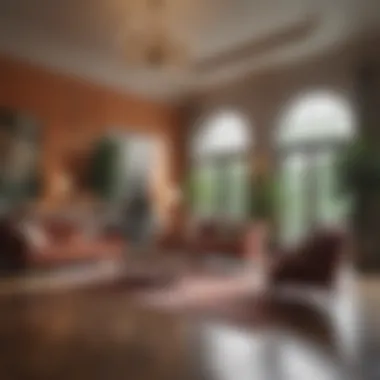
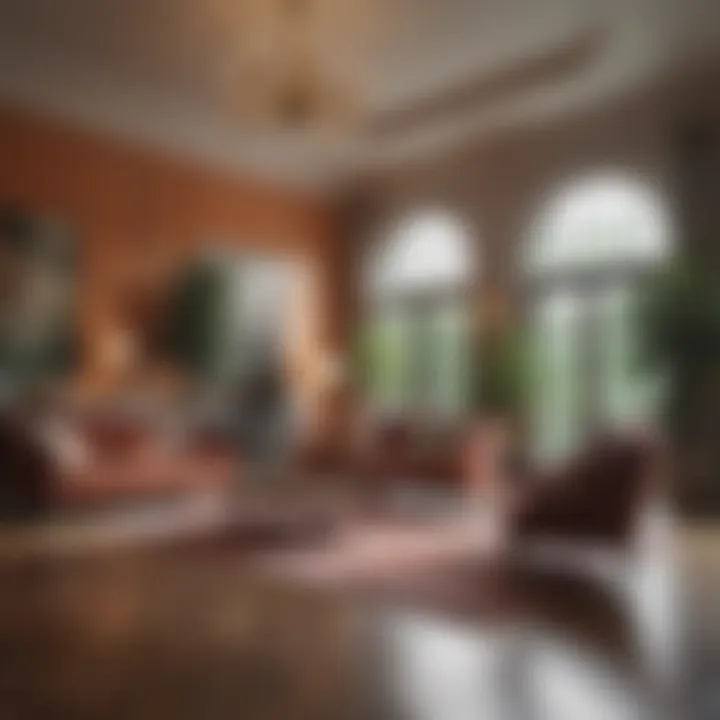
Intro
The concept of evergreen structure is not an arbitrary design or lifestyle trend; it serves as a foundational approach that can yield long-lasting benefits. In a rapidly changing world, homeowners and design enthusiasts often find themselves overwhelmed by fleeting trends in interior design, garden aesthetics, and hosting strategies. This article seeks to demystify the evergreen structure and elucidate how it can serve as a guiding principle in these areas.
Evergreen structure means creating spaces, parties, or gardens that stand the test of time, adapting to various lifestyle needs without losing their original charm or usability. By understanding and implementing these principles, individuals can foster environments that are not just beautiful but also functional and sustainable. This leads to aesthetic choices that are more informed and intentional.
In the sections that follow, we will delve deeply into design inspiration, focusing on current interior design trends and the psychological effects of color palettes. Furthermore, we will explore entertaining ideas, including themed party concepts and thoughtful menu planning. Each subtopic contributes to the overarching theme of the article: how to enhance living spaces and hosting experiences while keeping in mind the principles of timeless design.
This guide aims to equip homeowners, interior design enthusiasts, party hosts, and gardening aficionados with valuable insights that can inform their decisions. Understanding the underlying principles of evergreen structure involves looking beyond aesthetics and considering practical strategies that promote longevity and sustainability.
Defining Evergreen Structure
The concept of evergreen structure is essential in design and lifestyle, as it embodies principles that stand the test of time. This section emphasizes how integrating this structure can enrich living environments, making them more functional and aesthetically enjoyable. A significant aspect of the evergreen structure is its adaptability. It allows spaces to evolve without losing their fundamental charm and purpose. This adaptability ensures longevity, diminishing the need for frequent overhauls.
The Concept of Evergreen Design
Evergreen design centers around creating spaces that are not only visually appealing but also practical. This approach considers the long-term implications of design choices. When choosing colors, materials, and layouts, the priority should be on elements that remain attractive with changing trends. For instance, a neutral color palette offers a versatile backdrop, allowing for varied decor styles over time.
Furthermore, evergreen design encourages selecting durable materials, which resist wear and tear. Natural stone, hardwood, and high-quality textiles can provide lasting beauty, while also remaining functional. Investing in these materials can be more cost-effective in the long run, reducing the frequency of replacements or repairs.
Timeless versus Trendy
The distinction between timeless and trendy design choices is pivotal. Timeless designs often draw from classic aesthetics that have proven their worth through generations. This includes styles such as mid-century modern or traditionalism, which effortlessly combine functionality with beauty. On the other hand, trend-based designs prioritize current fashions, which may evolve rapidly.
Some benefits of timeless designs include:
- Durability: They are likely to last longer than fleeting trends.
- Easy to Maintain: Timeless elements often require less upkeep.
- Versatility: Their adaptability makes it simple to incorporate modern accents without a complete redesign.
However, recognizing trends isn't wholly negative. Trends can inspire creativity and make spaces feel fresh and inviting. It’s essential to balance both approaches, integrating trendy elements that can easily be replaced or updated while securing the foundation with timeless choices. This strategy cultivates a living environment that remains appealing across various lifestyles and preferences.
The Importance of Adaptability
Adaptability stands at the core of an effective evergreen structure in design and lifestyle. In an ever-evolving world where needs and preferences shift, having a flexible design approach ensures both functionality and harmony in any living space. A key benefit of adaptability is the ability to adjust to new trends without compromising timeless aesthetics. This allows homeowners to cultivate environments that are not only visually pleasing but profoundly relevant to their lifestyles.
The flexibility in design plays a crucial role in accommodating changes in individual life circumstances. Whether it's a growing family, a change in work habits, or the need for multifunctional spaces, adaptability enables the redesign of areas with ease. This avoids the necessity for complete overhauls that can be costly and time-consuming. Moreover, when designs evolve with the user’s needs, it maximizes the utility of the space, enhancing overall satisfaction.
Design Flexibility in Different Spaces
Every space has unique characteristics, and recognizing this is vital in achieving the principles of adaptability. When one considers design flexibility, it implies not merely aesthetic choices but also the practical aspects of a room's layout and function.
In living rooms, for example, adaptable seating arrangements can cater to both intimate gatherings and larger parties. Using furniture that can be easily reconfigured encourages social interaction while saving space. Multi-purpose features, like ottomans that double as storage, illustrate how flexibility can be interwoven into everyday living.
Kitchens also exemplify the necessity of flexibility. An open floor plan often requires islands or counters to serve multiple functions. The latest trends show a preference for movable islands that can be shifted to promote different activities, from cooking to working remotely. This not only optimizes the space but fosters a dynamic environment conducive to interaction and productivity.
Life Cycle Considerations in Designs
Understanding the life cycle of materials and designs is pivotal in creating spaces that withstand time. This principle emphasizes selecting durable elements and anticipating their longevity and maintenance needs.
For instance, an investment in high-quality flooring, like oak or bamboo, not only enhances aesthetic appeal but also provides a robust solution that can last for decades. Knowing how these materials will age helps in planning for maintenance and potential replacement without disrupting the overall environment.
In addition, the overall life cycle of a household can influence design choices. For example, young couples may prioritize different aspects compared to empty nesters. Anticipating these changes allows for a design evolution that maintains the space's relevance over time.
Adaptability in design means creating spaces that grow with you, ensuring long-term satisfaction and utility. This foresight not only promotes efficient use of resources but enhances the emotional connection one has with their space.
Fundamental Principles of Evergreen Structure
The concept of evergreen structure is rooted in timelessness, making it essential for homeowners and design enthusiasts. This section covers core principles that help create enduring designs. By recognizing simplicity, balance, proportion, and color theory, one can enhance functionality and aesthetics. The fundamental principles ensure that spaces not only look good but also serve their purpose effectively.
Simplicity and Functionality
Simplicity in design does not imply a lack of creativity. Rather, it embraces functionality. An effective space should allow for ease of movement and organization without overwhelming the senses. When decor is minimalistic, it leads to a more peaceful environment. For instance, a living room might benefit from clean lines and restrained furnishings that promote relaxation and conversation.
Noteworthy benefits of simplicity include:
- Clarity: Clear design insight allows a better sense of purpose in the space.
- Ease of Maintenance: Fewer items mean less clutter, leading to simpler upkeep.
- Timeless Appeal: Simple styles tend to have more longevity, adapting to changes over time without appearing outdated.


Design with intention promotes a space that reflects personal values while keeping functionality in mind. It is vital to consider how every element serves a purpose rather than just aesthetic appeal.
Balance and Proportion
Balance in design speaks to the visual weight of various elements. A well-proportioned room feels harmonious. It can be achieved through symmetry or asymmetry, depending on the desired effect. Symmetrical arrangements, such as matching armchairs across a coffee table, create formality. In contrast, asymmetrical designs can evoke casualness and creativity.
Key aspects to consider include:
- Visual Weight: Heavier items, like dark-colored furniture, need balance with lighter elements.
- Spatial Consideration: Proper proportions ensure that a room does not feel cramped or too spacious.
- Comfort and Use: Balance should also consider human scale and movement within the space.
Good balance enhances not only aesthetics but functionality, as well. Spaces that seem harmonious are generally more inviting.
Color Theory Application
Color plays a vital role in interior design and overall ambiance. Understanding color theory involves recognizing the psychological impact colors have on mood and perception. Choosing a color palette should be dictated by the purpose of the space and the feelings you want to evoke.
Principles of color application include:
- Complementary Colors: Use opposite colors on the color wheel for contrast.
- Analogous Colors: Choose colors next to each other for a harmonious look.
- Neutral Bases with Pops of Color: Neutral tones provide a calm backdrop while brighter accents can invigorate.
Ultimately, a well-considered color scheme can transform spaces and elevate the overall atmosphere. Utilizing colors wisely leads to introspective spaces conducive to productivity or relaxation.
"Design should never say, 'Look at me.' It should always say, 'Look at this.'"
Understanding these fundamental principles of the evergreen structure equips you with the tools necessary to create spaces that are both aesthetically pleasing and functionally coherent. By integrating simplicity, balance, proportion, and color theory, your designs can adapt and thrive through changing trends and personal evolution.
Evergreen Elements in Interior Design
Evergreen elements in interior design serve as the foundation for creating spaces that not only look good but also endure time. These elements focus on materials, furniture, and lighting that enhance the aesthetic and functionality of living spaces. Integrating these timeless components can lead to a harmonious home environment, which reflects solid design principles.
Materials that Last
Choosing the right materials is crucial when aiming for an evergreen design. Opting for high-quality substances assures durability, reducing the need for frequent replacements. For example, hardwood floors offer a timeless appeal and can withstand significant wear over years. Additionally, materials like stone and brick not only provide natural beauty but also require minimal maintenance.
Consider the following materials:
- Natural stone: Durable and available in various finishes.
- Hardwood: Classic option for floors and furniture, versatile in style.
- Ceramic tiles: Ideal for bathrooms, resistant to moisture and easy to clean.
Selecting these materials confers both aesthetic and functional benefits. They age gracefully, often becoming more beautiful as they develop character over time.
Classic Furniture Choices
Furniture choices can greatly influence the look and feel of a space. Classic pieces often blend seamlessly with various interior styles, making them a smart investment. Think of items like Chesterfield sofas or Mid-century modern chairs that offer comfort without sacrificing elegance.
When selecting furniture:
- Focus on timeless silhouettes that suit various decor.
- Select neutral colors that can be accented with accessories.
- Opt for functional designs that cater to your lifestyle needs.
By prioritizing classic furniture, one can achieve a sophisticated and inviting atmosphere. These selections not only endure aesthetic trends but also ensure practicality in everyday use.
Utilizing Natural Light
Effective use of natural light is an essential aspect of evergreen design. It enhances the ambiance of a space, contributing to energy efficiency and promoting well-being. Large windows, skylights, and open floor plans allow light to flow freely, creating a warm and inviting environment.
Here are some methodologies to increase natural light:
- Strategic placement of mirrors: They reflect light, enhancing brightness.
- Open layouts: Minimize walls to allow light to permeate across spaces.
- Light-colored walls: These absorb less light, making rooms feel more open.
Natural illumination not only makes interiors more comfortable but also reduces reliance on artificial lighting, promoting both sustainability and health.
Evergreen design elements create spaces that stand the test of time, both aesthetically and functionally.
Achieving Timeless Entertaining Spaces
Creating an environment that's suitable for entertaining guests is crucial in any home. Timeless entertaining spaces reflect personality, practicality and hospitality. This section focuses on specific elements that contribute to an enjoyable atmosphere. It also discusses how these elements can benefit the host and the guests.
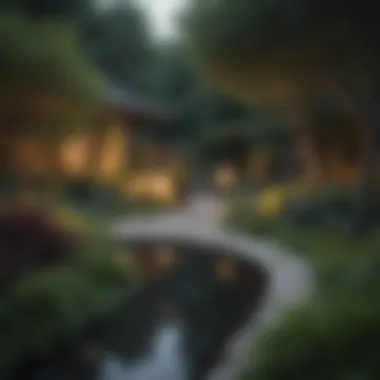
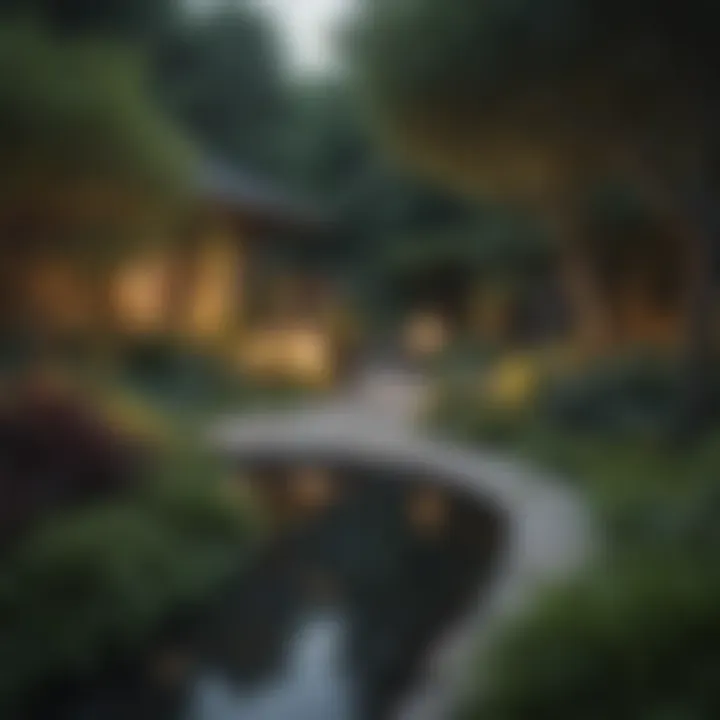
Creating an Inviting Atmosphere
The atmosphere sets the tone for any gathering. To create an inviting space, it is important to manage light, color, and arrangement effectively. Soft lighting creates warmth; consider using dimmers or layered lighting with lamps and candles. The color palette should promote comfort. Neutral tones can serve as a backdrop, allowing guests to bring their energy into the space. Incorporating plush textiles and natural materials ensures comfort while providing visual warmth.
Additionally, the arrangement of furniture plays a significant role. Spaces should allow for easy flow of movement and facilitate conversation. Think about placing seating options in a circular or semi-circular layout. This allows for more intimate interactions, encouraging guests to engage in discussions. A warm and inviting environment invites guests to stay longer and enjoy time together.
Versatile Menu Planning
Menu planning goes hand in hand with hosting. A versatile menu reflects consideration for various preferences. It is beneficial to provide a mix of dishes that cater to dietary needs. Including vegan, vegetarian and gluten-free options can make everyone feel welcome. Assess the nature of the meeting to dictate the formality of the menu.
Finger foods and light appetizers work well for casual gatherings, while a sit-down dinner suits more formal occasions. Remember, presentation is also critical; beautifully arranged food enhances appeal and can spark conversation among guests. Preparing some items in advance can ease stress on the day of the event. Simplicity paired with an element of surprise in flavor can leave a lasting impression.
Multifunctional Furniture Arrangement
Furniture arrangement maximizes space functionality. Choosing pieces that serve multiple purposes is essential in small areas. Consider using extendable dining tables that adapt according to the guest list. Sofas that convert into beds can serve as additional sleeping space without compromising style.
Arrange seating to promote interaction. Group chairs together and consider including movable options. Benches or poufs can provide flexibility, allowing for quick adjustments based on guest dynamics. An open layout encourages mingling, which is vital when hosting.
To maintain the aesthetic appeal in multifunctional spaces, mix textures and styles. Layering different materials on surfaces can create visual depth and interest. Ultimately, a well-thought-out furniture arrangement enhances not only the functionality but also the overall experience for both hosts and guests.
Sustainable Gardening Practices
Sustainable gardening practices are crucial in the context of creating an evergreen structure in design and lifestyle. These practices not only foster an environment conducive for plants to thrive but also promote biodiversity, reduce carbon footprints, and conserve resources. As homeowners and gardening enthusiasts seek to create beautiful and functional green spaces, considering sustainability can lead to benefits that extend beyond aesthetics.
When we talk about sustainable gardening, we mean strategies that work in harmony with nature rather than against it. By adopting these practices, gardeners can help mitigate issues such as soil erosion, water scarcity, and the loss of native habitats. Implementing eco-friendly techniques ensures that gardens remain healthy and productive in the long run.
Selecting Native Plants
Choosing native plants is a fundamental aspect of sustainable gardening practices. Native plants are species that grow naturally in a specific area, adapted to local climate and soil conditions. These plants require less water, fertilizer, and other resources compared to non-native varieties. Additionally, they support local wildlife, providing habitat and food sources for birds, insects, and other species.
Benefits of selecting native plants include:
- Lower Maintenance: They tend to thrive without extensive care, reducing the time and effort needed for upkeep.
- Water Efficiency: Native species are typically more drought-resistant, which is critical in conserving water resources.
- Biodiversity Support: By planting natives, you help maintain the balance of the local ecosystem, supporting various life forms.
Adopting native plants is not just a personal choice; it serves as a commitment to the environment. By choosing local flora, homeowners are making a statement about their dedication to sustainability.
Water Conservation Techniques
Water conservation is an essential consideration in sustainable gardening. Efficient use of water resources can greatly affect not only the sustainability of gardens but also the broader ecological footprint. Several techniques can help minimize water waste and optimize usage:
- Rainwater Harvesting: Setting up systems to collect rainwater can provide a natural source for irrigation, reducing reliance on municipal water supplies.
- Drip Irrigation: This method delivers water directly to plant roots, minimizing evaporation and runoff. It efficiently uses water, ensuring plants receive what they need.
- Mulching: Applying mulch around plants can help retain soil moisture, suppress weeds, and regulate soil temperature, reducing the need for frequent watering.
- Soil Management: Improving soil health through composting and the addition of organic matter can enhance moisture retention in the soil.
Water conservation techniques contribute significantly to sustainable gardening by ensuring plants receive adequate hydration while minimizing waste. As gardeners become more mindful of their water usage, they can create lush, vibrant spaces that respect and preserve this precious resource.
In summary, sustainable gardening practices are not only beneficial for individual gardens but also essential for fostering a healthy and balanced environment. By selecting native plants and employing effective water conservation techniques, gardeners can significantly enhance their landscapes while contributing to a more sustainable future.
Implementing these practices allows garden enthusiasts to enjoy the beauty of nature while acting responsibly towards it.
Incorporating Technology in Evergreen Design
In the context of evergreen structure, technology plays a crucial role in modern design and lifestyle. As the digital age progresses, integrating technology into our living spaces has become essential for enhancing functionality and comfort. Homeowners and design enthusiasts now seek innovative solutions that not only complement timeless design principles but also make day-to-day life more efficient and enjoyable. The importance of incorporating technology into evergreen design lies in its potential to create adaptable, sustainable, and responsive environments.
Smart Home Integration
Smart home integration has revolutionized the way we interact with our living spaces. It allows for the seamless connection of devices, contributing to a more convenient lifestyle. Systems such as Amazon Alexa and Google Home allow users to control various appliances through voice commands. This integration is not just about convenience; it also emphasizes energy efficiency. For example, smart thermostats like the Nest Learning Thermostat adjust heating and cooling based on your habits, which leads to reduced energy consumption and lower utility bills.
Additionally, security systems can be enhanced through smart technology. Consumers can monitor their homes via smartphone cameras, ensure doors are locked remotely, and receive alerts about unusual activities. This capability provides peace of mind and contributes positively to the overall well-being of the inhabitants.
Energy Efficiency Solutions
Incorporating energy efficiency solutions is relevant in the context of sustainability within evergreen design. Energy-efficient appliances reduce both environmental impact and operating costs. Key options include Energy Star-rated devices, water-saving fixtures, and solar panels. Solar panels not only provide renewable energy but can also lead to tax credits and incentives that further justify the initial investment.
Another consideration is the choice of LED lighting. LED bulbs consume less power and have a longer lifespan than incandescent options. By replacing traditional light sources with LEDs, homeowners can make a significant impact on their energy bills over time.
Moreover, insulation technologies, such as double-glazed windows and energy-efficient wall materials, create comfortable indoor environments while minimizing heating and cooling expenses.
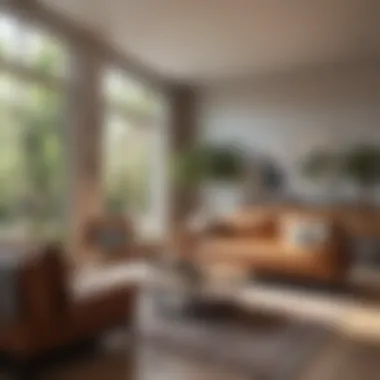
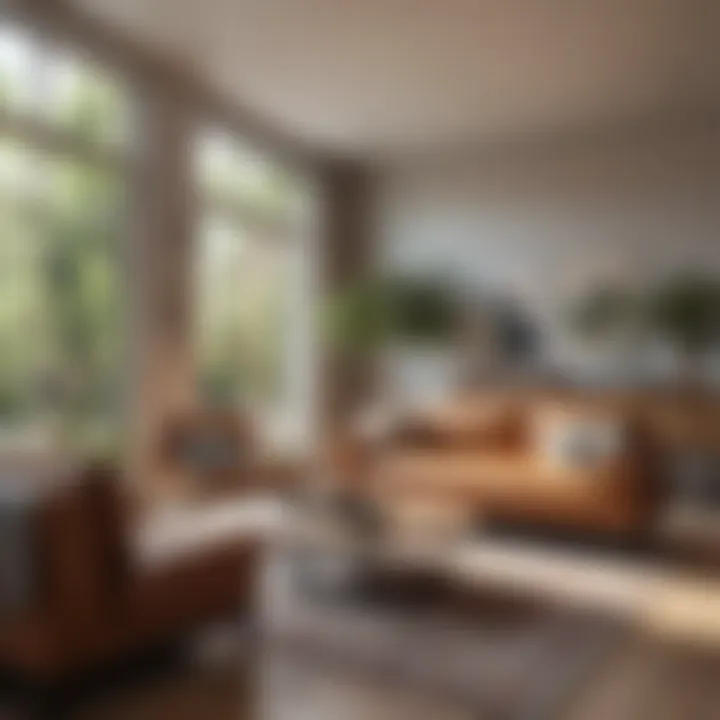
"Integrating technology into design doesn’t distract from timeless principles; it enhances them and aligns with sustainable living practices."
The Role of Personalization
Personalization plays a vital role in the context of evergreen structure. This approach enhances both the functionality and aesthetic appeal of a space. Personalizing your environment means more than just selecting colors or furniture. It involves creating a connection between your personal preferences and the physical spaces you inhabit. When you introduce elements that reflect who you are, you not only enrich your living environment but also cultivate a sense of belonging and comfort. This process ensures that the spaces you design or dwell in do not become outdated or irrelevant as trends change.
Reflecting Individual Style
Individual style is a key aspect of personalization in design. It allows the homeowner to express their uniqueness through their choice of decor, layout, and overall ambiance. The colors, furniture styles, and decorative items chosen can tell a story about one’s personality and experiences. For instance, someone who loves traveling may display artifacts collected from different countries, creating conversation starters and adding depth to their space.
Moreover, reflecting individual style transcends mere aesthetics. It encourages homeowners to invest in pieces that resonate with them personally, rather than following fleeting trends. When choosing elements for your home, prioritize what truly resonates with you. Consider,
- Heritage Pieces: Items passed down through generations often carry sentimental value and timeless appeal.
- Art: Original artwork or even framed photographs can make a significant impact, showcasing personal history or taste.
- Color Choices: Colors influence mood. Choose shades that evoke positive feelings or memories for you.
By placing your individual style at the forefront of the design process, the space becomes an authentic representation of who you are.
Building Emotional Connections with Spaces
Building emotional connections with spaces is a profound component of personalization. Spaces that evoke emotions foster well-being and enhance one’s quality of life. This connection can be achieved by establishing an atmosphere that aligns with one’s values and memories. For example, incorporating family photographs in living areas creates a warm and inviting environment.
To strengthen these connections, consider the following strategies:
- Familiar Objects: Surrounding yourself with objects that spark joy or pleasant memories can greatly enhance emotional ties to a space.
- Scent and Sound: Incorporate scents and sounds that resonate with personal experiences or preferred environments. This can include favorite playlists or fragrance diffusers with scents that offer comfort.
- Custom Spaces: Create areas in homes that cater to specific activities, like a reading nook or a meditative corner. These spaces can help individuals feel more at home.
Emotional investment in your surroundings can lead to a more fulfilling and enriching life experience.
In summary, personalization in design contributes to meaningful living spaces and enhances the timeless quality of your environment. By being intentional about choices and reflecting individual style, each person can craft a nurturing home that stands the test of time.
Navigating Future Trends
In the realm of design and lifestyle, navigating future trends is crucial for maintaining relevance and utility. This section examines how understanding upcoming design preferences and cultural shifts can profoundly impact creative choices. Homeowners and design enthusiasts need a keen sense of future trends as it influences not just aesthetic choices but also functionality. Knowing what trends endure helps in crafting spaces that do not just serve current needs but adapt with time.
Identifying Lasting Trends
Identifying lasting trends requires careful observation and open-mindedness. Some trends are fleeting, often tied to specific societal moments, while others stand the test of time, integrating seamlessly into various design aspects.
Key indicators of lasting trends include:
- Sustainability: A growing movement towards eco-friendly materials and energy-efficient resources reflects a lasting shift in priorities.
- Minimalism: This trend promotes simplicity and functionality, encouraging spaces that avoid clutter yet deliver elegance.
- Natural Elements: The inclination towards nature-inspired designs has consistently emerged, proving that organic materials and colors resonate well.
To spot these lasting trends, surveys, design exhibitions, and expert opinions play key roles. Engaging with communities on platforms like reddit.com can provide insights into what resonates most with people over time.
The Influence of Cultural Shifts on Design
Cultural shifts significantly shape design practices and preferences. From societal values to technological advancements, these changes inspire new approaches in creating spaces. For instance, as remote working becomes widely accepted, there is a demand for home offices that blend productivity with comfort.
Factors influencing design include:
- Technological Integration: The rise of smart technologies influences how we interact with our environments, pushing for designs that accommodate these innovations.
- Globalization: Exposure to various cultures can inspire diverse aesthetic choices, promoting a mix that respects tradition while embracing modernity.
- Health and Well-being: The focus on mental and physical health leads to designs that incorporate wellness aspects, such as natural light and open spaces.
Understanding how cultural shifts mold design trends enables one to anticipate necessary changes. This forward-thinking perspective fosters environments that are not only contemporary but also meaningful.
Navigating future trends in design allows for a more holistic approach. It emphasizes a balance between aesthetic preferences and functional requirements, ensuring designs remain relevant over time.
Practical Strategies for Implementation
Effective implementation of evergreen structure in design and lifestyle is crucial. It ensures the longevity and adaptability of spaces. Focused strategies frame the approach to remodeling, entertaining, or gardening. Practicalities involve clear planning, thoughtful choice of materials, and alignment with personal preferences. All these contribute to a sustainable aesthetic that persists over time.
Step-by-Step Planning for Spaces
Planning begins with a thorough assessment of the area involved. Identify potential uses and the primary functions of each space. Prioritize flexibility so that rooms can serve multiple purposes over time. For example, a living room may also function as a workspace or guest area.
- Measure Dimensions
Start by measuring the dimensions to understand spatial limitations. Check ceiling heights and natural light sources. This affects furniture placement and color choices. - Define Goals
Determine what you want from the space. Is it relaxation, social interaction, or productivity? Setting clear goals helps in making informed decisions. - Choose Suitable Materials
Select durable materials that can withstand wear and tear. High-quality wood, genuine leather, and stone are recommended. They enhance both function and aesthetics. - Layout and Flow
Draft a layout that fosters easy movement. Consider the visual connection between areas, especially if the space is open.
This systematic planning enhances usability while maintaining the essence of timeless design. It aids in creating a cohesive environment that blends with evolving life stages.
Evaluating and Adjusting Design Choices
Once the implementation phase begins, continuous evaluation is necessary. This step ensures that the design remains relevant to lifestyle changes.
- Assess Functionality
Regularly review how well the space meets the needs of its users. If an area is underutilized, consider a reconfiguration. - Adapt Aesthetics
Color schemes and furnishings may need refreshing. Incorporate seasonal updates with accessories and decor items. This keeps the atmosphere dynamic without extensive renovations. - Gather Feedback
Getting input from family or guests provides insight. Their experiences can reveal unconsidered aspects, enhancing the overall design. - Long-term Vision
Always hold in mind the long-term purpose of each space. Life events or shifts in personal circumstances should inform adjustments. This ongoing alignment ensures that the structure remains evergreen in essence.















